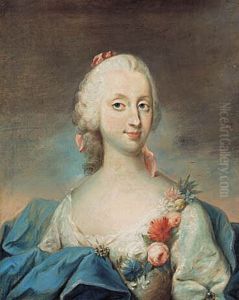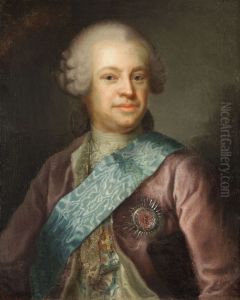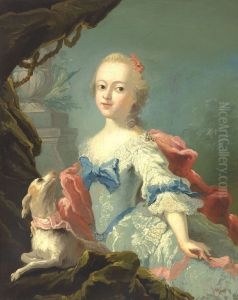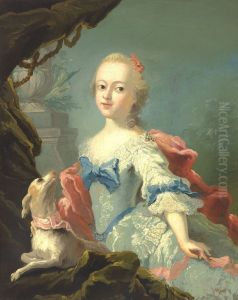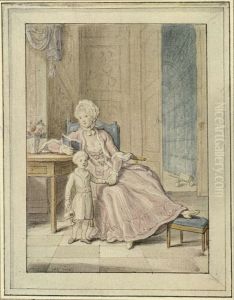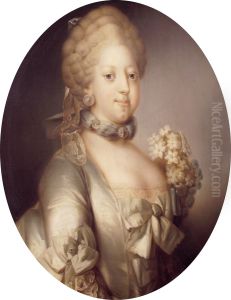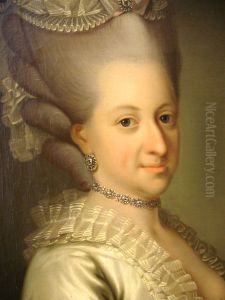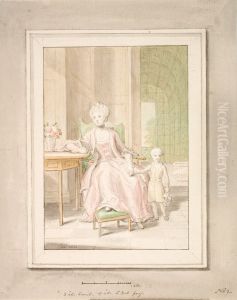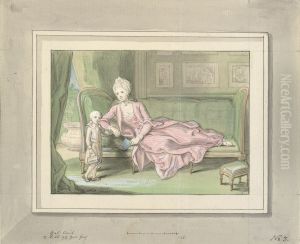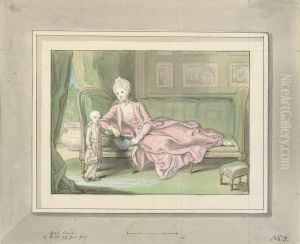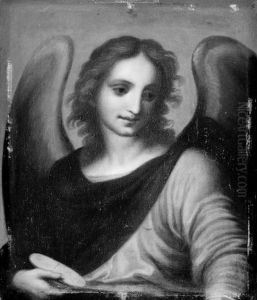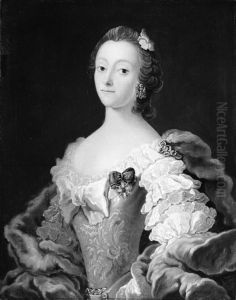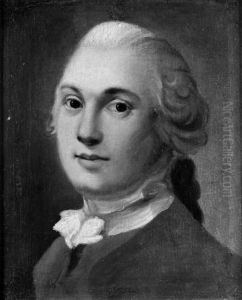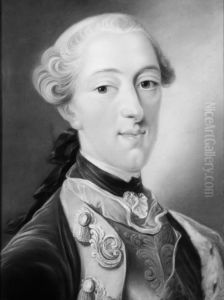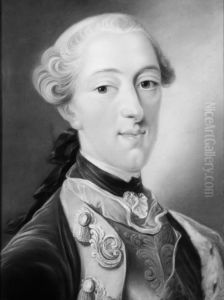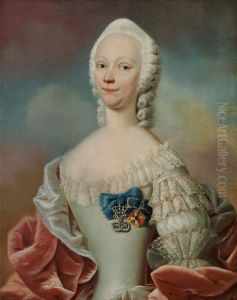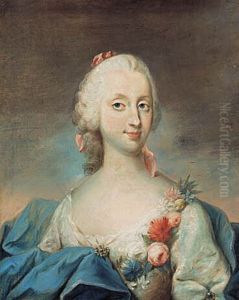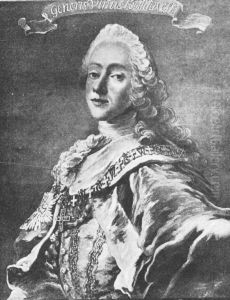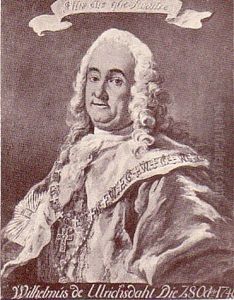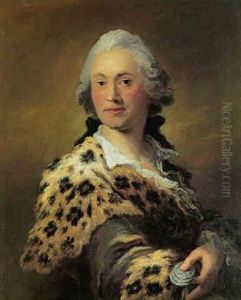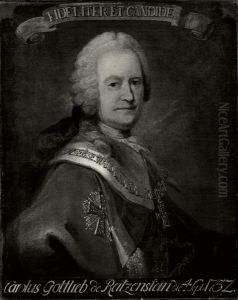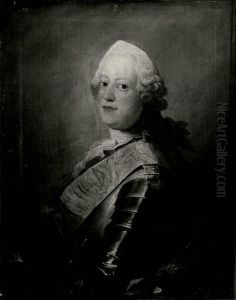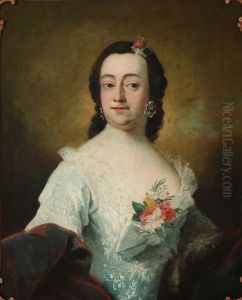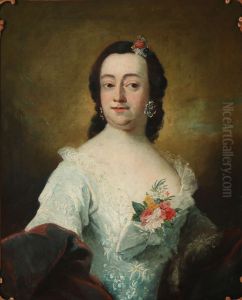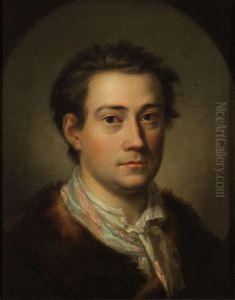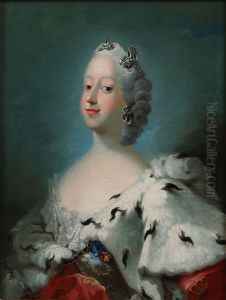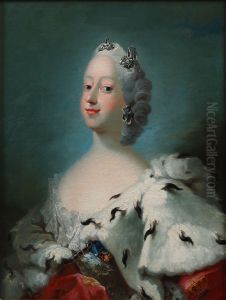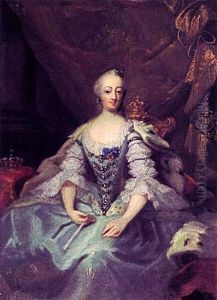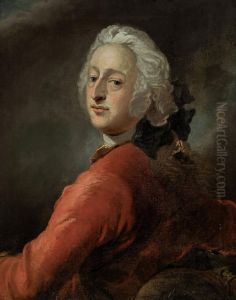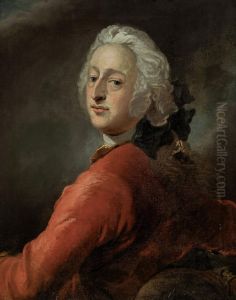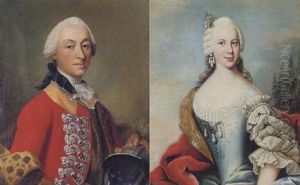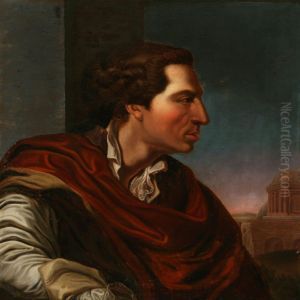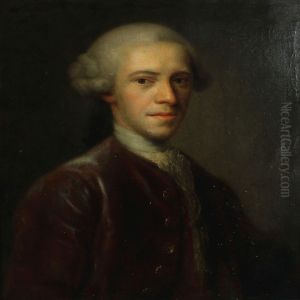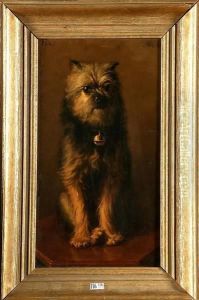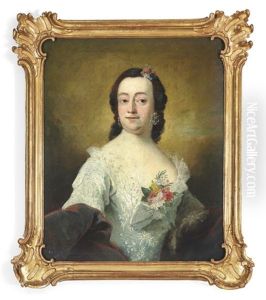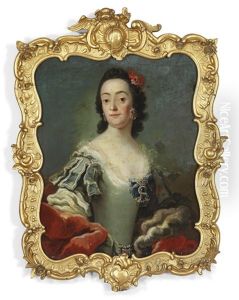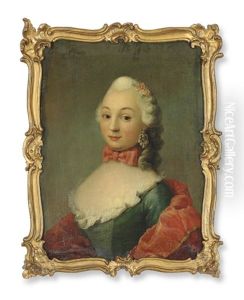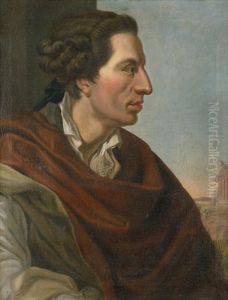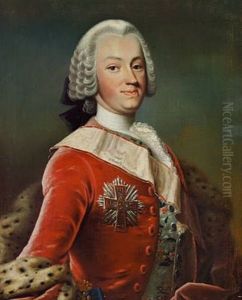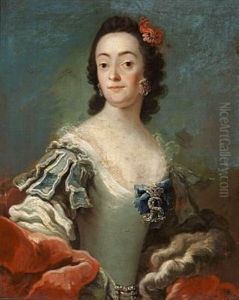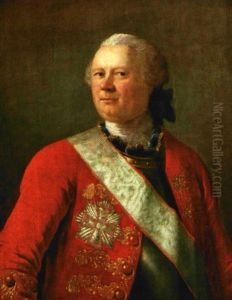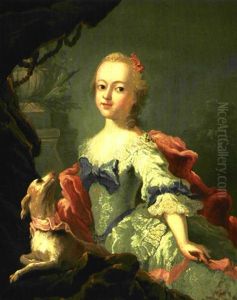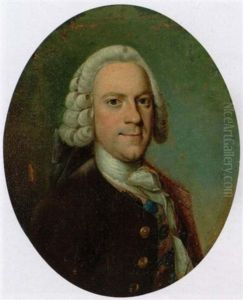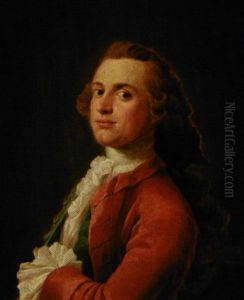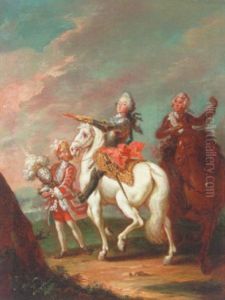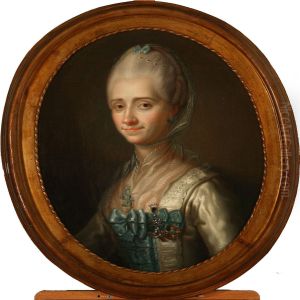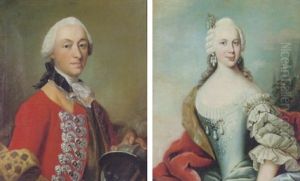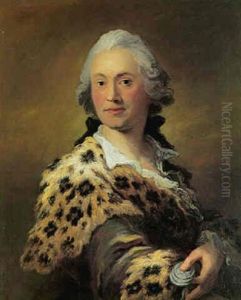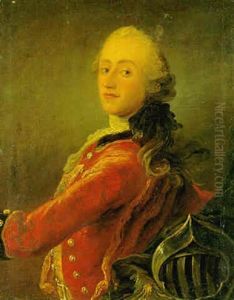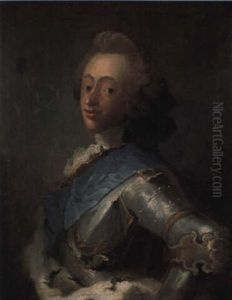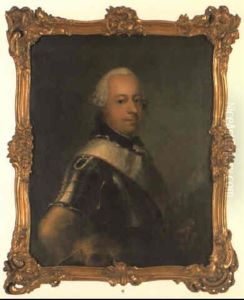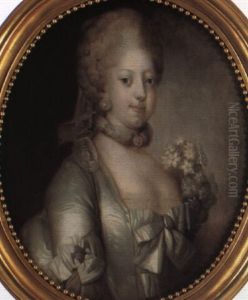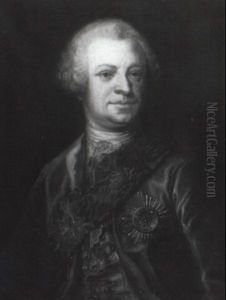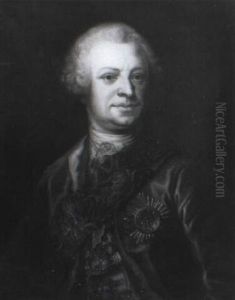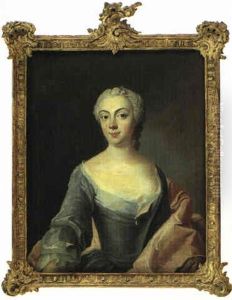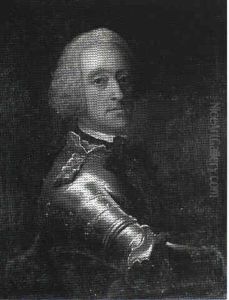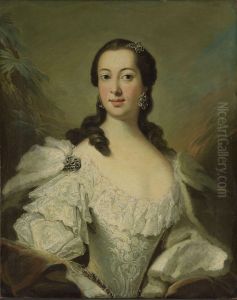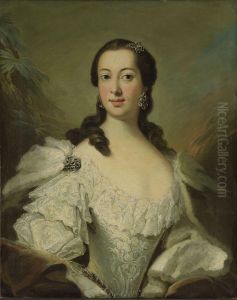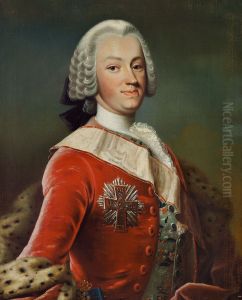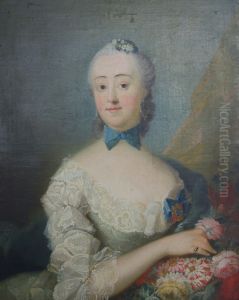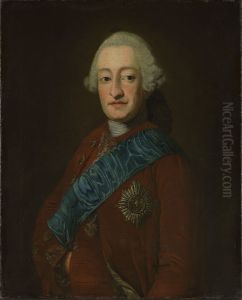Peder Als Paintings
Peder Als was a Danish historical and portrait painter who significantly contributed to the art scene in Denmark during the 18th century. Born in Copenhagen in 1726, Als showed artistic promise from a young age. He was initially apprenticed to a carpenter but soon shifted his focus to painting. His talent was recognized by the royal court, and he became one of the early students at the Royal Danish Academy of Fine Arts, which was established in 1754.
Als's education at the Academy was under the tutelage of prominent court painters such as Carl Gustaf Pilo and the French artist Jacques Saly, who was the first director of the Academy. Pilo's influence, in particular, was instrumental in Als's development as an artist. After completing his studies, Als went abroad to further his artistic training, which was a common practice among aspiring artists of the time. He spent time in Paris and Rome, where he was exposed to the works of the Old Masters and the contemporary art movements of the period.
Returning to Denmark, Als brought with him the influences of French and Italian art, which he incorporated into his own style. He became a court painter and received commissions from the Danish royal family and other members of the aristocracy. His portraits were appreciated for their refinement, attention to detail, and the ability to capture the character and status of his sitters. Als was also known for his historical paintings, which often depicted scenes from Danish and classical history. These works were characterized by their dramatic compositions and vibrant use of color.
Throughout his career, Als was deeply involved with the Royal Danish Academy of Fine Arts and contributed to the development of the Danish art scene. He served as a professor at the Academy, where he taught many students who would go on to become prominent artists themselves. His impact on Danish art was significant, bridging the baroque traditions and the emerging neoclassical style.
Peder Als died in Copenhagen in 1776, leaving behind a legacy as one of Denmark's notable artists of the 18th century. His works continue to be exhibited in art museums and galleries, and his influence can be seen in the generations of Danish artists that followed.
